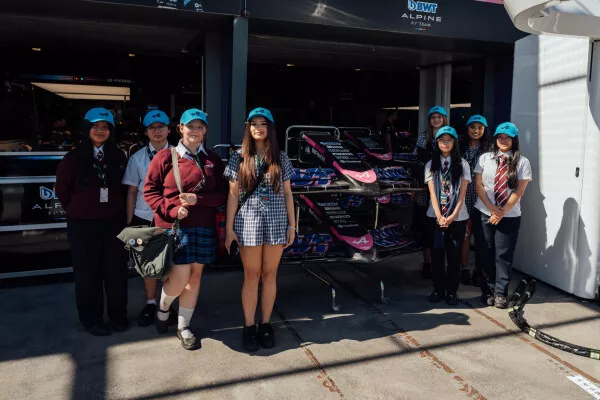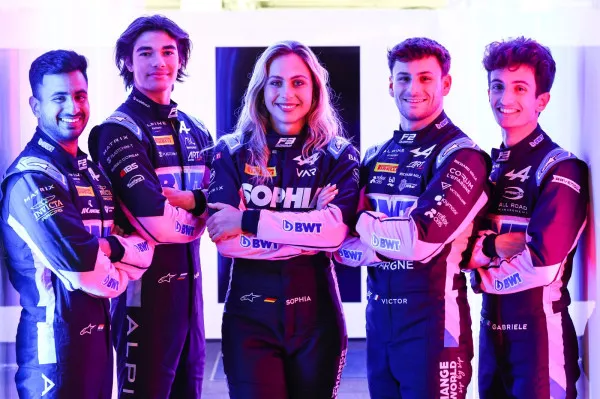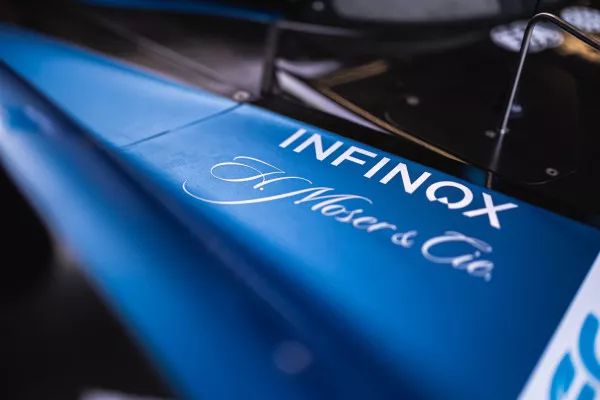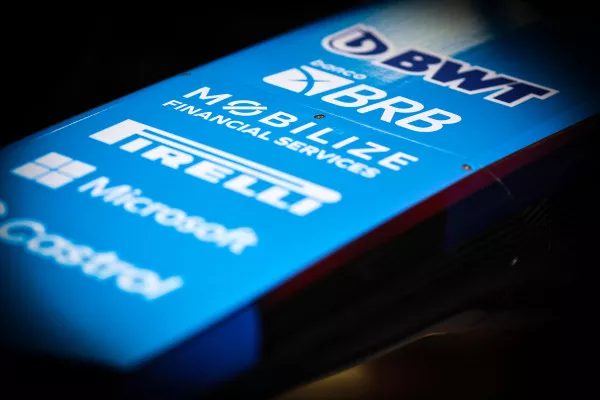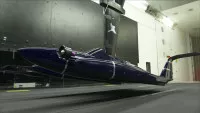Alpine R&D Lab and Aqualines: F1 expertise enhancing sustainable mobility
Alpine R&D Lab - a new entity within the Alpine Business Unit - is applying the group's unique expertise to a variety of innovative projects, notably in the field of transport decarbonisation. BWT Alpine F1 Team Strategic Advisor Bob Bell describes the operation's objectives and its technical collaboration with Aqualines, a French start-up behind a new generation of ultra-fast naviplanes conceived for low-carbon maritime shipping.
13 June 2023
Alpine, which is working on the electrification of its model range, knows that taking sustainable development forward calls for actual acts, not just talk. This stance led to the creation of Alpine R&D Lab in 2022 with a view to applying the brand's technological know-how outside of the automobile industry in the form of collaborative work with innovative partners in fields ranging from sustainable mobility and advanced robotics to sport and health.
“Traditionally, we focus on competition.
But we also apply our technological know-how and capabilities to commercial projects unrelated to Formula 1.”Bob Bell
BWT Alpine F1 Team Strategic Advisor
A dedicated Lab
Formerly Renault F1's Technical Director at the time of its world titles in 2005 and 2006, Bob Bell today works as a Strategic Advisor at BWT Alpine F1 Team. His experience made him the ideal person to set up Alpine R&D Lab and initiate its first project with Aqualines, a start-up based in Bayonne, southwest France.
"The R&D Lab is multifaceted", he begins by pointing out. "It consists of the facilities and resources we have here in the United Kingdom, at Enstone, but also touches on the facilities and resources in France, at Viry-Châtillon, where the F1 engines are designed and developed, and even those used by the group to develop its sports cars."
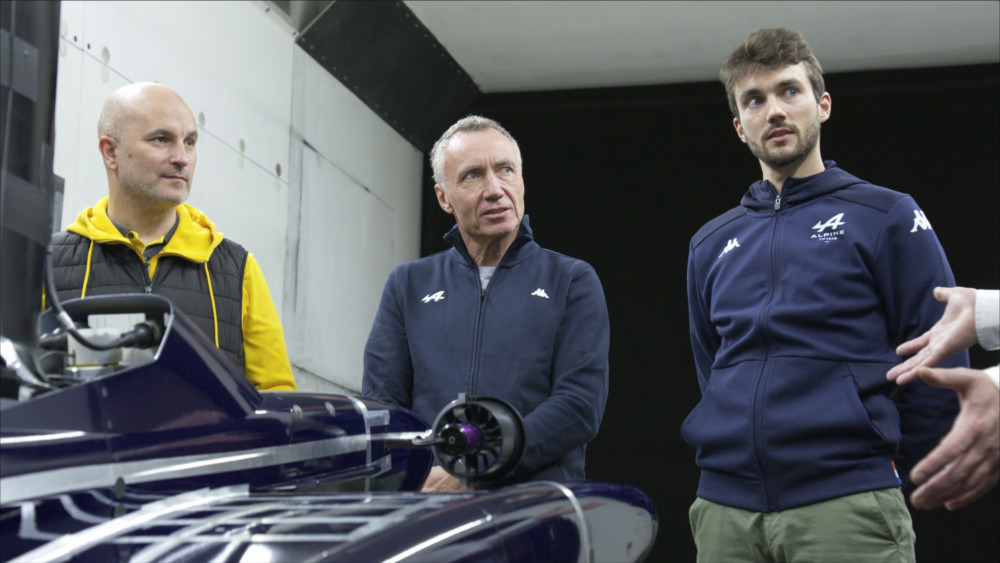
Around Bob Bell, the teams at Alpine and the Alpine R&D Lab work on innovative projects, particularly in the field of sustainable mobility.
Enstone on the front row
Alpine R&D Lab's collaboration with Aqualines puts Enstone's unique expertise centre stage. "The technology interaction between the two spheres of engineering is actually very close, which is why it was such a good project for us to take on" notes Bob Bell. "Aqualines' vehicle operates very close to the surface of the sea and, of course, Formula 1 cars run very, very close to the ground. The wind-tunnel techniques that you need to be able to carry out such tests are very similar in both situations. It's really only F1 technology that can provide the level of understanding and knowledge needed to simulate vehicles operating that close to the surface. This was fundamental and gave us a great basis to work from.”
The timelines of the project are reasonably short compared with commercial project standards, but less so by F1 standards... "That's why people are coming to us, because we can offer very fast response, and be very agile. The first phase of our work with Aqualines concerned the creation of a wind-tunnel model based on their existing vehicle. We produced all the necessary engineering drawings and information, then manufactured and tested the model to their specification."
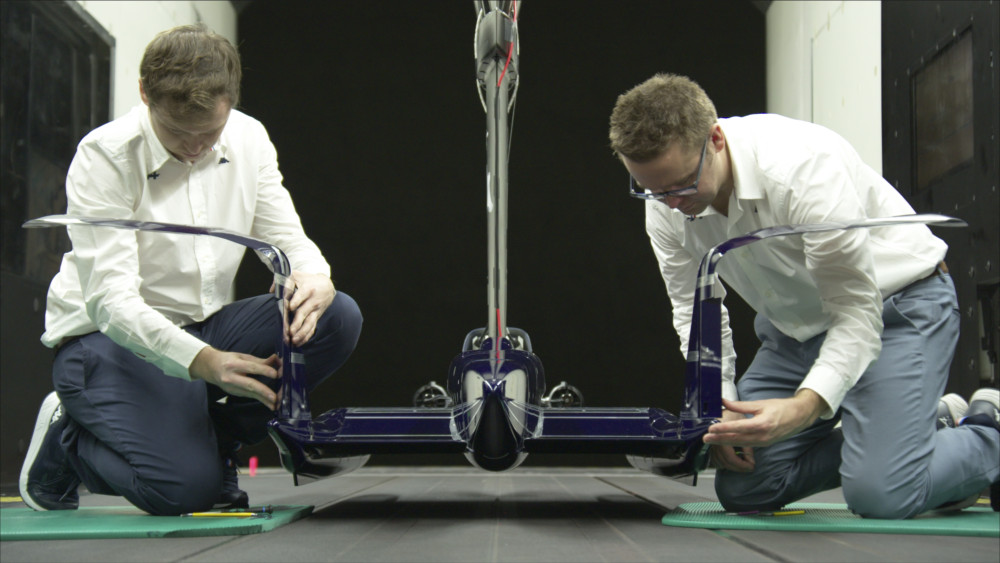
Aqualines’Naviplane wind tunnel model is ready for testing.
Formula 1 single-seaters use ground effect to benefit from the low pressure it produces beneath the cars to suck them to the ground. In the case of Aqualines' Naviplanes, the phenomenon is harnessed to create lift, thereby enabling it to travel above the water's surface, where resistance to forward movement is minimal.
"The front turbines channel air beneath the craft, while the rear turbine generates the thrust", explains Aquaplanes CEO Pavel Tsarapkin's associate Guillaume Catala who attended the wind-tunnel tests in Enstone. "Once the vehicle reaches a speed of around 90 to 100kph, energy is no longer required to maintain the ground effect, which makes it a very economical means of transport."
So, are we on the verge of an age of flying ships? Not quite, but this is a perfectly realistic concept which proved its value for transporting maritime freight above the sea as long ago as the 1960s. Aqualines has simply taken the idea further to deliver a form of low-energy blue mobility that is respectful of marine biodiversity. Indeed, when flying over the sea's surface at their cruising speed, Naviplanes avoid disturbing underwater ecosystems.
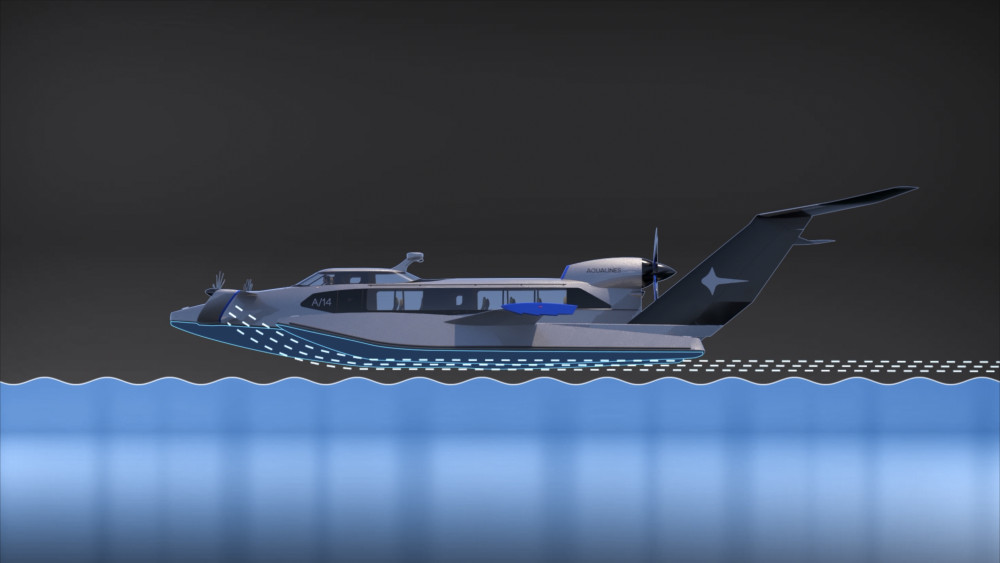
The principle of ground effect, well known in Formula 1, allows the boat to 'fly' above the water.
A highly innovative project
After extensive testing with a scale model, Aquaplanes has started to build a full-size version. "Testing of this prototype is scheduled to start at the beginning of 2024", reveals Guillaume Catala.
In the meantime, wind-tunnel work at Enstone has enabled the current vehicle's development to be fine-tuned. "We have provided them with not just a physical wind-tunnel model which, of course, they can use as they wish, but also all of the data and information that has come from the wind-tunnel tests", reports Bob Bell. "Aqualines' engineers can go away and analyse and compare it to their own expectations. They may well then come back to us and say we'd like to do some further tests. Perhaps look at particular areas in more detail. In the longer term, that could well generate further collaborative testing."
Meanwhile, Aqualines is exploring a number of avenues, as Pavel Tsarapkin explains: "We are looking at a range of models, from two to 300-seaters. The physical principal remains the same. It's just a matter of the economical efficiency of different routes. Right now, we are focusing our effort on developing two-seaters as the proof of concept. After that, we will make the ultimate choice of the first commercial product, probably between 12 and 50 passengers."

With his partner Guillaume Catala, Pavel Tsarapkin is behind the project for these Naviplanes, which will carry between twelve and fifty passengers above the waves.
Beyond its commercial side, the collaboration between Alpine R&D Lab and Aqualines is welcomed as an interesting opportunity by the technical staff at Enstone. "The detail of the technology used by Aqualines isn't in itself technically relevant to Formula 1," says Bob Bell. "Where I think the big benefit lies is that it has given our engineers an opportunity to think differently, to think about a different type of engineering, and that's very exciting for our engineers. I think this sort of project helps them develop as engineers. And it allows us to evaluate our methods and techniques in a slightly different environment which, I am convinced, is great for future projects involving the Lab with other customers."
Founded in 1955 by Jean Rédélé, Alpine has asserted itself over the years with its French-style sports cars. In 2018, the brand presented the new A110, a sports car that is true to Alpine’s timeless principles of compactness, lightness, agility and driving pleasure. In 2021, the Alpine Business Unit was created, to become the dedicated brand for the innovative, authentic and exclusive sports cars of the Renault Group, benefiting from the heritage and know-how of its historic Dieppe factory and the engineering expertise of the Alpine Racing and Alpine Cars teams.
Media library (19)
- All (19)
- Images (17)
- Videos (2)
Founded in 1955 by Jean Rédélé, Alpine has asserted itself over the years with its French-style sports cars. In 2018, the brand presented the new A110, a sports car that is true to Alpine’s timeless principles of compactness, lightness, agility and driving pleasure. In 2021, the Alpine Business Unit was created, to become the dedicated brand for the innovative, authentic and exclusive sports cars of the Renault Group, benefiting from the heritage and know-how of its historic Dieppe factory and the engineering expertise of the Alpine Racing and Alpine Cars teams.
related topics



